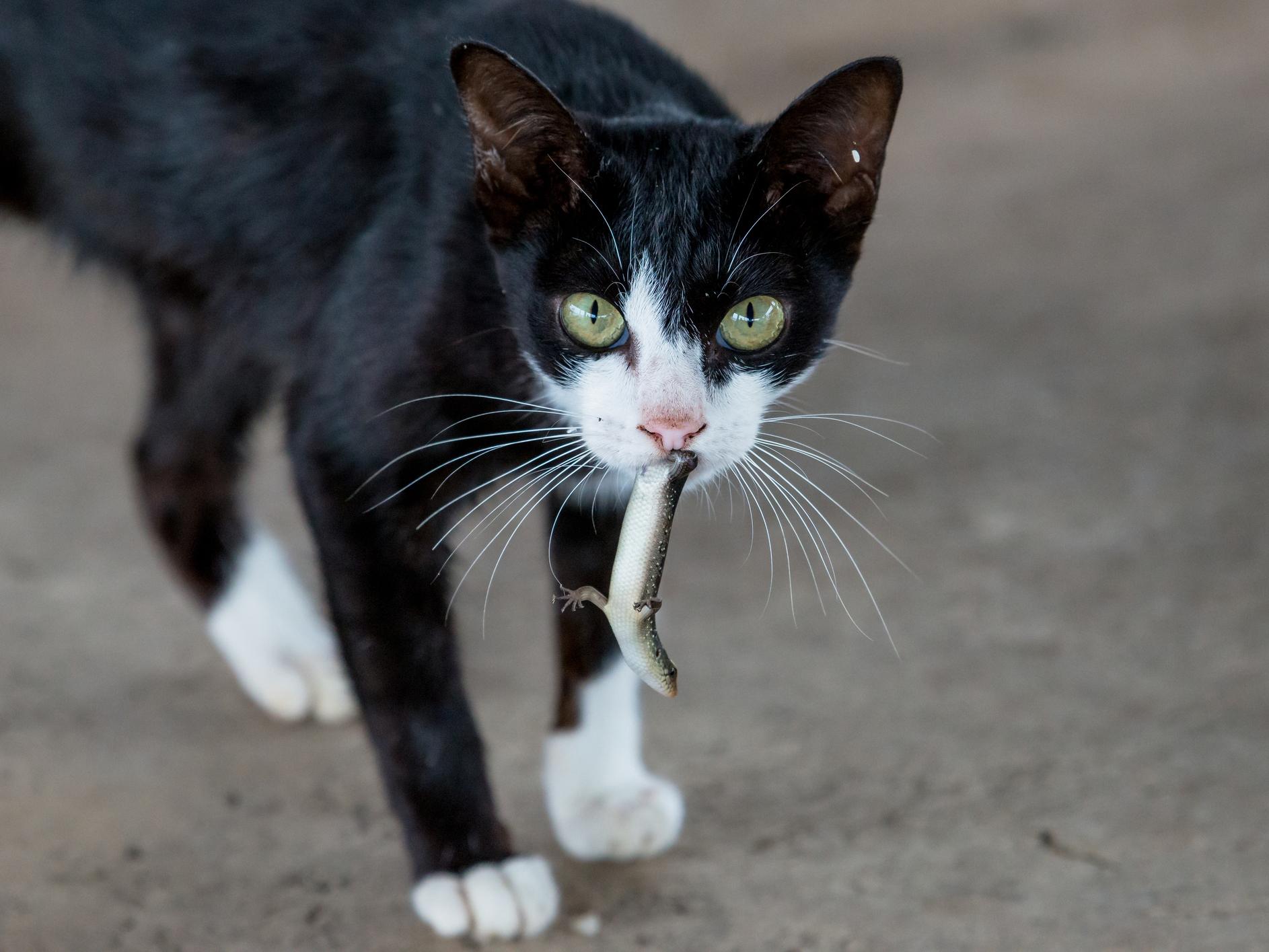Cats kill two million Australian reptiles every day, pushing species to brink of extinction
Feral animals and pets are posing major threat to nation's unique native wildlife, and have already been implicated in total loss of at least 20 mammals

Your support helps us to tell the story
From reproductive rights to climate change to Big Tech, The Independent is on the ground when the story is developing. Whether it's investigating the financials of Elon Musk's pro-Trump PAC or producing our latest documentary, 'The A Word', which shines a light on the American women fighting for reproductive rights, we know how important it is to parse out the facts from the messaging.
At such a critical moment in US history, we need reporters on the ground. Your donation allows us to keep sending journalists to speak to both sides of the story.
The Independent is trusted by Americans across the entire political spectrum. And unlike many other quality news outlets, we choose not to lock Americans out of our reporting and analysis with paywalls. We believe quality journalism should be available to everyone, paid for by those who can afford it.
Your support makes all the difference.Nearly two million reptiles are being slaughtered every day by Australia’s cat population, including several species under threat of extinction.
Australia is home to a highly unique array of animals, and many of these creatures are being pushed to the brink of extinction by the nation’s cats.
Across the country, cats have been implicated in the loss of at least 20 mammal species, such as the lesser bilby and desert bandicoot.
The Australian government has already declared war on the feline menace, but a new study by its Threatened Species Recovery Hub is the first to assess the impact on the region’s lizards and snakes.
They found that in total about 650 million reptiles are being killed by Australian cats annually, with the average cat taking 225 every year.
“Some cats eat staggering numbers of reptiles. We found many examples of single cats bingeing on lizards, with a record of 40 individual lizards in a single cat stomach,” said Professor John Woinarski, a conservation biologist at Charles Darwin University who led the research.
The ambitious survey was based on the analysis of over 10,000 cat dietary samples contributed by scientists from across Australia.
At least 11 of the species identified are threatened with extinction, including the great desert skinks and pygmy copperhead snakes.
“Comparing our findings with research from overseas we found that feral cats eat more reptiles in Australia than they do in the US or Europe,” said Professor Woinarski.
“This could be because we have more abundant reptiles in Australia.”
Australia is home to more than 10 per cent of the world’s reptile species, and while Professor Woinarski said cat predation is unlikely to be the biggest threat these animals face, it has clearly been taking a significant toll.
While feral cats were the main cause for concern, the researchers estimated that more than 50 million of the reptile killings were being carried out by pet animals.
The findings were published in the journal Wildlife Research.
Cats are known to be a major threat to biodiversity everywhere, with one previous study finding at least 63 species of birds, mammals and reptiles have been totally eradicated by feline predators.
Humans have transported their furry companions around the world, placing particular pressure on creatures that had never encountered such effective predators before.
According to one apocryphal story, the entire population of Lyall’s wrens on New Zealand’s Stephens Island was wiped out by one cat, which belonged to the island’s lighthouse keeper and was named Tibbles.
Despite the knowledge that cats can wreak such havoc on populations of small animals, little has been known about the impact they are having on reptiles in particular.
Australia’s threatened species commissioner, Dr Sally Box, said: “This new research is sobering, but up to date scientific evidence is important to understanding the devastating impacts of feral cats on our native wildlife.
“Science drives action and my office will continue to work with our partners and the Australian community to protect Australia’s unique native animals from the impact of feral cats.
“The research shows the number of reptiles killed by pet cats and strays is also high. I would like to commend pet owners who are containing their cats, which is both safer for their pets and better for Australia’s wildlife.”
Under the Australian government’s threatened species strategy, more than A$30m (£16.7m) has already been set aside to stop feral cats annihilating native wildlife.
In May the Australian Wildlife Conservancy completed construction of the world’s largest cat-proof fence, creating a sanctuary in central Australia to protect threatened marsupials from the introduced mammals.
Join our commenting forum
Join thought-provoking conversations, follow other Independent readers and see their replies
Comments